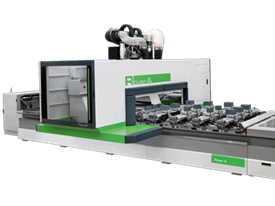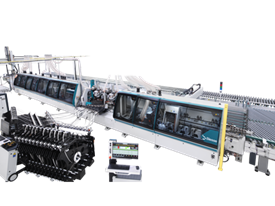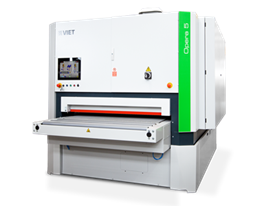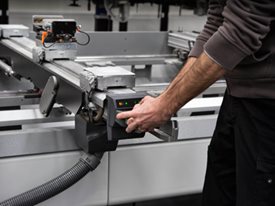There are numerous wood-chopping gadgets on the market that can quickly cut wood while saving you time. Each instrument has a unique technique for cutting wood since there are many distinct ways to cut wood. As long as you are using the appropriate wood-cutting instrument for the job, the cutting process can be straightforward and rapid.
While some of the gadgets operate on direct energy or charged batteries, others require manual labour. It's crucial to understand the proper wood-cutting tools and how to use them properly. So to be precise for the answer of how to cut wood, the answer is power tools.
A tool that requires both an extra mechanism and a power source is referred to as a power tool. They are employed in cutting, drilling, driving, sanding, and other tasks.
Because there are so many different kinds of power tools available, it can be challenging to remember what each sort of saw performs. Today, we'll be concentrating on different saws and their applications.
Discover various Power Tool Types to answer your question of how to cut wood and when to use these power tools to cut wood.
How to Cut Wood with Power Tools?
1) Table SawIf you’re wondering how to cut plywood, plastic, and aluminium, you’ve landed just at the right place! A very common power tool used by both professionals and do-it-yourselfers is the table saw. The Table Saw is among the greatest and most popular.
An electric motor powers a circular saw blade set on an arbour on a table saw, a tool used for cutting wood. The top of a table is partially penetrated by the circular saw blade. Table saws are fantastic since you can alter them to suit particular tasks you're working on.
For instance, you can adapt your table saw's blades to handle different types of materials. Because they can cut wood, plywood, fiberboard, plastic, and aluminium, table saws are mostly used in the woodworking sector.
When is a table saw appropriate to use?If you need to make several cuts, a table saw should be used. Ripping large boards, crosscutting, and cutting at an angle are a few cuts.
2) Mitre sawsMitre saws are a very common power instrument that are used by both professionals and do-it-yourselfers. A table saw is a piece of equipment used in woodworking that has a circular saw blade set on an arbour and is propelled by an electric motor.
The top of a table is partially penetrated by the circular saw blade. Table saws are fantastic since you can alter them to suit particular tasks you're working on. For instance, you can adapt your table saw's blades to handle different types of materials.
Wood, plastic, plywood, and other soft materials can be cut with crosscuts, mitre cuts, bevels, and compound cuts with mitre saws.
When is a mitre saw appropriate to use?If you need to create an angular cut, a mitre saw should be used. Use a mitre saw as well if you're working on complex woodworking projects like cabinets or furniture.
3) Chain sawA chainsaw is a mechanical saw that uses a set of teeth coupled to a spinning chain that travels along a guide bar to cut various materials, typically wood. Although they can't be used to make precise cuts, chainsaws are excellent for anyone who has to quickly chop a lot of wood.
When to use a chainsaw?If you need to perform any of these three tasks—limbing, bucking, or felling—you should use a chainsaw. A downed tree's limbs are removed during the lambing process. Both bucking and feeling involve the removal of the tree's trunk. You'll need the greatest axe for splitting wood if you have extra.
4) Power SawA reciprocating saw is a power saw that uses a blade action that alternates between pushing and pulling to saw through materials. Reciprocating saws are great because you can easily replace the blade to cut a variety of materials.
When is a reciprocating saw appropriate to use?If you need to do any demolition or renovation work, cut wood with nails, or prune trees, you should use a reciprocating saw. Our reciprocating saw is a constant in our lives; we use it to prepare deer for processing and to complete house renovations.
5) Jig SawJigsaws and reciprocating saws are extremely similar. There are, however, two key distinctions. In contrast to reciprocating saws, which have blades that stick out from the saw's nose, jigsaws have blades that protrude from the bottom of the instrument.
Jigsaws are additionally designed specifically to create curved cuts. This tool can be used to make straight cuts in addition to the curved cuts for which it was designed.
When is a jigsaw appropriate to use? If you require a small, accurate instrument that can make both straight and curved cuts, you should use a jigsaw. 6) Band SawA band saw is a power saw that uses two wheels to move a metal band to provide cutting power. Band saws come in both vertical and horizontal varieties.
Due to their capacity to rip through lengthy lumber and do crosscuts and mitre cuts with mitre gauges, vertical band saws are the most common alternative for woodworking. For metalworking, horizontal band saws are employed.
When ought a bandsaw to be used? If you need to resaw or cut through lengthy pieces of lumber, you should use a bandsaw.Conclusion
These are various power tool types and when to use them for wood cutting! We trust that this information has helped you to understand any misunderstandings.
Please make sure to conduct your study on the tools you will be utilising if you are a newbie woodworker with little to no experience using power tools. Power tools are simple to use and facilitate the creation of tasks, but if they are not used properly, they can be dangerous. Do not forget to read the power tool's owner's manual.



.png)





 Worldwide
Worldwide
 Italia
Italia
 United Kingdom
United Kingdom
 Россия
Россия
 France
France
 中国
中国
 Asia
Asia
 Deutschland
Deutschland
 España
España
 Schweiz
Schweiz
 North America
North America
 India
India
 Australia & New Zealand
Australia & New Zealand
 Türkiye Cumhuriyeti
Türkiye Cumhuriyeti
 Middle East
Middle East
 Brasil
Brasil